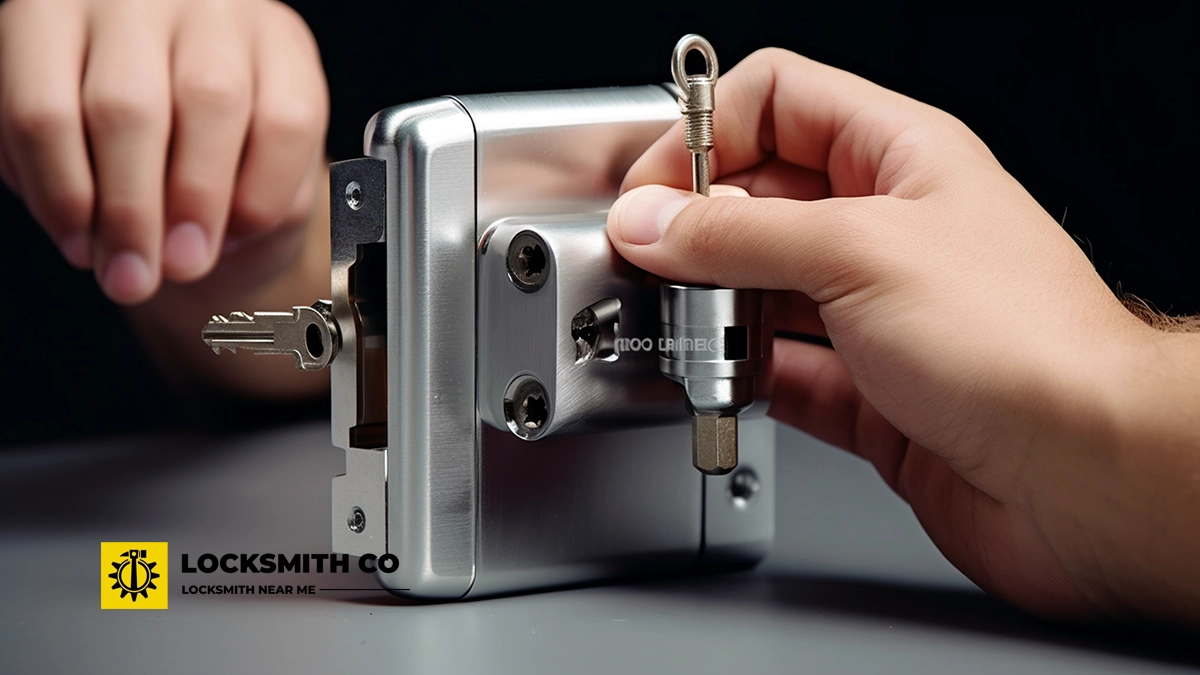Common Lock issues demystified: When to DIY and when to call a professional locksmith. From…
DIY Lock Rekeying: A Beginner’s Guide to Secure Your Home
DIY lock rekeying: A beginner’s guide to secure your home. Securing your home is a top priority for any homeowner, and rekeying a lock is a practical step towards enhancing this security.
Whether you’re a DIY enthusiast or simply keen to bolster your home security, understanding how to rekey a lock can be invaluable.
DIY Lock Rekeying
This beginner’s guide aims to demystify the process of DIY lock rekeying, offering you essential home security tips and insights into the services available.
By the end, you’ll feel confident in your ability to tackle this task or trust in professional lock rekeying services should you prefer expert assistance.
Let’s embark on this journey to ensure your home remains a safe haven.
Understanding Lock Rekeying
Benefits of DIY Lock Rekeying
Opting for DIY lock rekeying presents several advantages. Firstly, it offers a cost-effective solution.
By taking matters into your own hands, you can significantly reduce expenses associated with hiring professional locksmiths.
Additionally, it provides a sense of empowerment and self-sufficiency; mastering how to rekey a lock equips you with valuable skills that enhance your home security.
This approach also allows you to maintain flexibility in managing your security needs, offering the convenience of changing keys at your discretion.
Moreover, DIY lock rekeying can serve as a learning opportunity, expanding your understanding of lock mechanisms and home security tips.
For those who enjoy hands-on projects, it can be a satisfying endeavour, providing both practical benefits and a sense of accomplishment.
However, it’s crucial to evaluate your comfort level with such tasks and consider professional lock rekeying services if the job seems too daunting.
When to Rekey a Lock
Rekeying a lock becomes essential in several scenarios. One primary instance is when you move into a new home.
Even if previous occupants have returned their keys, there’s no guarantee that additional copies aren’t in circulation.
Rekeying ensures that only you and those you trust have access.
Similarly, consider rekeying if you’ve lost your keys, as this eliminates the risk of them falling into the wrong hands.
It’s also advisable to rekey after a change in domestic circumstances, such as a roommate moving out, to maintain control over who can enter your property.
Rekeying can also be necessary if you suspect a security breach or if your keys have been stolen.
Regular rekeying, as part of routine home security tips, is another proactive measure, ensuring that your home security is consistently up to date.
In these situations, DIY lock rekeying or professional lock rekeying services can be considered for optimal safety.
Tools and Materials Needed
Essential Tools for Rekeying
Embarking on a DIY lock rekeying project requires a few essential tools to ensure success.
First, you’ll need a rekeying kit suited to your lock brand, as different locks may require specific pins and tools.
These kits typically contain new pins, a key gauge, and other necessary components.
A screwdriver is another crucial tool, needed for disassembling the lock from the door.
For precision work, pinning tweezers or small pliers are indispensable, aiding in the careful placement of pins within the lock cylinder.
A plug follower, a cylindrical tool, is essential for safely removing and replacing the lock core without disturbing the internal pins.
Additionally, keep a set of replacement keys handy to test the rekeyed lock.
While these tools are straightforward, ensuring you have the correct versions for your lock type is critical.
Proper preparation and having these tools on hand streamline the rekeying process, enhancing efficiency and effectiveness.
Choosing the Right Rekeying Kit
Selecting the appropriate rekeying kit is a crucial step in ensuring a smooth DIY lock rekeying process.
Start by identifying the brand and model of your lock, as rekeying kits are often specific to particular manufacturers like Kwikset or Schlage.
These kits typically include pins, a key gauge, and other specialised tools tailored to that brand’s locks.
It’s essential to confirm that the kit you choose includes comprehensive instructions, especially if you’re new to rekeying.
Some kits offer universal components that can cater to multiple lock types, which can be advantageous if you have varied locks throughout your home.
Additionally, consider kits that come with extra pins and keys, offering greater flexibility and future-proofing for potential rekeying needs.
Investing in a well-reviewed kit can save time and prevent frustration during the process.
Remember, choosing the right rekeying kit is fundamental to successfully enhancing your home’s security through effective lock rekeying.
Step-by-Step Rekeying Process
How to Rekey a Lock Safely
Rekeying a lock safely involves several meticulous steps. Begin by removing the lock from the door using a screwdriver.
Carefully disassemble the lock housing to access the cylinder.
Insert the key and turn it slightly to disengage the pins, then use a plug follower to slide the cylinder out without disturbing the pins.
With the cylinder exposed, remove the old key pins using pinning tweezers. Consult your rekeying kit to insert new pins that match your new key’s configuration.
Ensure each pin sits flush with the plug’s surface. Reinsert the cylinder into the housing, using the follower to maintain pin alignment.
Test the new key to confirm smooth operation. Finally, reassemble the lock and reinstall it in the door.
Throughout the process, maintain organised workspaces and handle components with care to avoid losing small parts.
By following these steps, you can confidently complete a DIY lock rekeying while maintaining security and functionality.
Common Mistakes to Avoid
When engaging in DIY lock rekeying, several common pitfalls can hinder success.
One frequent mistake is neglecting to match the pins correctly to the new key.
Ensuring that each pin aligns perfectly is crucial for the lock to function smoothly. Losing small components, such as pins or springs, is another common issue.
Keeping a tidy workspace and using tools like tweezers can help manage these tiny parts.
Additionally, many novices fail to use a plug follower correctly, leading to displaced pins. It’s vital to keep the follower steady while removing and reinserting the cylinder.
Another error is applying excessive force, which can damage delicate lock components. Always handle parts gently and with care.
Lastly, skipping steps or rushing through the process can result in incomplete rekeying. Following instructions methodically ensures a successful outcome.
By being mindful of these mistakes, you can enhance your proficiency in lock rekeying and bolster your home security effectively.




Comments (0)